Tatsy - Image Sharing and Social App.
Individual Conceptual Project
Over a 10 Week Period
Date:
December - March 2023
Detailed Case Study on Medium:
Medium Blog Link
The Brief
Conceptual Tattoo Booking and Social App with a focus on working within an agile framework and ideation phase. Current Tattoo Artists have to compete with larger social media platforms not tailored specifically so have to work within the limits of the platform. Vice-versa, users who want to book or find a tattoo artist when searching this platform can’t tailor their results to find artists and studios nearby and to their preference.
My role was to undertake the research, ideation, prototyping and design of the app creating reports leading to a final stakeholder presentation. Responding to a loosely defined brief I went out and conducted research through surveys, affinity mapping, and personas. Then validated these and created prototypes and A/B tests leading to a final high-fi prototype over a 10-week period.
The Problem
During my research, I conducted an expert interview to understand more about the responsibilities of a Tattoo Artist. Combined with further qualitative research from my survey which was synthesised into an affinity map and personas.
After the research phase, I created three problem statements that set about the different needs.
Hermoine needs a way to reschedule and notify new clients on a whim, in case clients don’t show up for appointments to not lose out on income and have gaps in her work.
Kate wants a way to collaborate with tattoo artists to confirm designs and inspiration as her busy schedule doesn’t allow her to visit the tattoo parlour in person to finalise the details.
James wants a way to find out when a tattoo artist he’d like to get an appointment with is available near him or has a free slot.
User Goals
After collecting my results I created an affinity map to create groupings of ideas and pain points to synthesise my findings some of my key insights follow below;
The majority of users still found tattoo ideas, through search platforms, social media or recommendations.
Being unable to directly translate or communicate across a design or idea that matches the idea that the client wants.
Users liked being able to share and discuss ideas with friends through boards and saving images to find artists that they like and collaborate with.
Design Process
These lead me to come up with three separate solutions and journeys to try and alleviate some of my users' pain points.
Personalised Discovery — Discovering Home page which recommends nearby studios and artists based on user's interest.
Create a Catalogue — Allows users to gather and collect images into a catalogue - allowing them to keep track of saved artists, studios and inspiration.
Notifying Availability — Tracks availability of studios and artists, so if a slot is suddenly made free other users can book in a slot if desired.
After mapping out the three different journeys through an Information Architecture of the app. I then went and started sketching in my book to plan out how I’d want each step to flow. These were then further refined into mid-fidelity screens to work out some of the language and tone I wanted for the app and micro-copy.
Final Outcome and Reflection
Finally being developed into a high-fidelity prototype and some mock-ups of the app.
I would have liked further time to refine the final UI more with some additional tests to validate some of my design decisions with some A/B testing and usability interviews with some of my users. This would allow me to improve upon the foundation and work on further additional screens for some of the other journeys I had planned out during the information architecture stage of the project.
Doing each stage of the process in two-week design sprints, in an agile process allowed me to focus solely on each step without worrying about the next until I had completed my current goals. Further allowing myself to slightly break off from the two-week blocks if I thought I needed an extra week to focus on analysing and synthesising research to set myself up better for the ideation phase. I enjoyed quickly and rapidly taking time to work on each stage leading up to the high-fidelity prototypes allowing me to practice further some design and new research tools to add to my toolkit.







